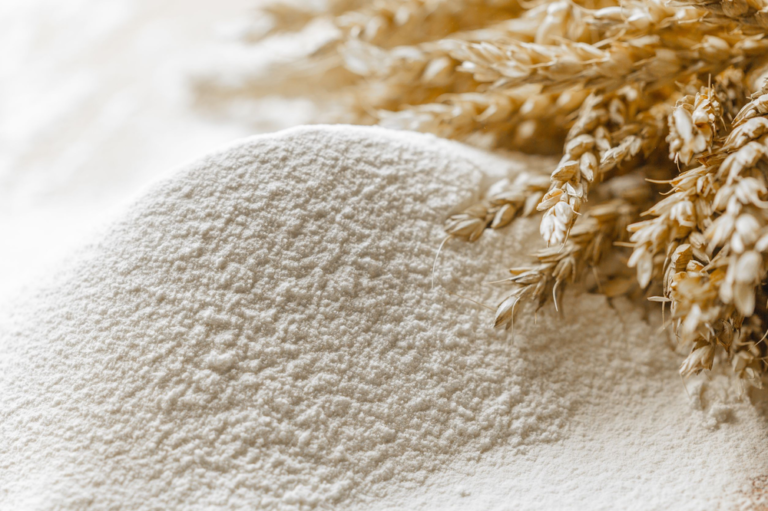
Microbial contaminants in flour is not a new issue and continue to cause consternation for millers and suppliers of flour. A recent report from Germany will likely put this issue back in the spotlight and again illustrate the huge challenge of managing risks in a food that is inherently not ready-to-eat but is often treated as such.
So what is the issue? In response to the detection of Shiga toxin-producing Escherichia coli (STEC) in multiple flour samples in the Federal Monitoring Plan (BüP) of 2018, Germany’s Federal Ministry of Food and Agriculture (BMEL) asked its Federal Institute for Risk Assessment (BfR) to conduct a health assessment on the risks associated with the handling and the use of STEC-positive flour and consumption of food manufactured from that flour.
The nationwide monitoring plan, for which flour samples from mills were investigated for the occurrence of STEC, found 50 STEC-positive samples (15.2 %) in 328 wheat, spelt and rye flour samples.
Serotypes O157:H7, O103:H2 and O145:H28, which are considered highly virulent and often associated with hemolytic uremic syndrome (HUS), were isolated from various rye, wheat and other cereal flours. A total of 40 % of the isolates from rye flours (11 of 27) and wheat flours (25 of 62) belonged to clinically relevant STEC serotypes.
While both the U.S. and Canada have established a link between disease outbreaks and Shiga toxin-producing Escherichia coli (STEC) contamination in flour, Germany had seen no such direct linkage. However, the BfR’s assessment found a close genetic match between a STEC isolate in flour and the human isolate (EHEC O157:H7), leading the BfR to conclude that the occurrence of highly pathogenic EHEC variants in flour is also probable in Germany, but that the direct links have likely just not yet been discovered.
In relation to its task to determine which risks are associated with the handling and the use of STEC-positive flours as well as the consumption of food manufactured from STEC-positive flours, BfR stated that:
- STEC can be introduced into flour at several points in the food chain, with the highest probability of origination being from entry into the food chain in the field.
- Flour is a minimally processed natural foodstuff that is not usually subject to a bacterial reduction step.
- Mills play a considerable role in the distribution of bacteria within a product batch and the spreading of the STEC from batch to batch.
- The shelf life of the flour depends on the degree of milling and the composition (type) and may have a relatively short shelf life (6-8 months) or up to 1 1/2 year.
- This is a concern because the report found that viable STEC of different serogroups are detectable in flour for more than 50 weeks.
Included among the BfR recommendations for mitigation are:
- Evaluation of the effectiveness of cleaning and disinfection plans (where applicable) on a regular basis via suitable self-monitoring programs.
- Heat treatment of ready-made dough for retail sale or production of ready-made dough from heat-treated flour.
- Including ready-made doughs in the national monitoring programs (MNKP, BüP) and/or zoonosis monitoring.
- Removal of flour dust wherever possible
- Not dusting baked goods with flour after baking.
BfR also recommends that the public be made aware of the possible presence of pathogens in flour and existing consumer guidance be amended to include recommendations such as storing and processing flour, baking mixes and raw dough separately from other foods; processing doughs as quickly as possible or storing them in the refrigerator; not eating raw doughs; cleaning utensils and surfaces thoroughly after contact with flour, baking mixtures, or raw dough; and washing and drying hands thoroughly after processing flour, baking mixes, or raw dough.
Additionally, BfR sees a need for further research before a final health risk assessment can be issued. As such, it is planning to meet with selected experts to discuss the open scientific question, such as:
- What are the pathways of pathogenic microorganisms into cereals and flour; its dependence on the grain used and the primary production, and consideration of further contamination routes?
- What is the prevalence of STEC in flours and flour-containing products, based on the type of flour and origin, production areas, and transport routes; and taking different methods, contamination, or technology-related germ reduction into account?
- How effective are risk mitigation measures in the mill?
- How do pathogenic microorganisms and the microbiome behave in different types of dough as a function of temperature and time?
- Further research on optimizing and standardizing methods for isolating STEC; the importance of dormant cells for diagnostics, research on reactivation and/or detection of these cell stages; effectiveness of the applied technologies of heat treatment of flour for killing STEC; and alternative measures for inactivating STEC in flour.
So what does this mean to the food industry? Clearly this study is quite large and has found a level of STEC contamination that causes concern, especially as many of the STEC isolates were clinically relevant. While this is an issue that is well recognized by many flour suppliers, this new study could cause regulators to look more closely at the flour supply in the US, which could clearly create a nightmare for the flour supply in the US. I see this study as a need for continued dialogue between industry, regulators, and academia on how to solve this problem and to find ways to ensure an adequate level of public health protection without driving a massive disruption of the flour supply.






